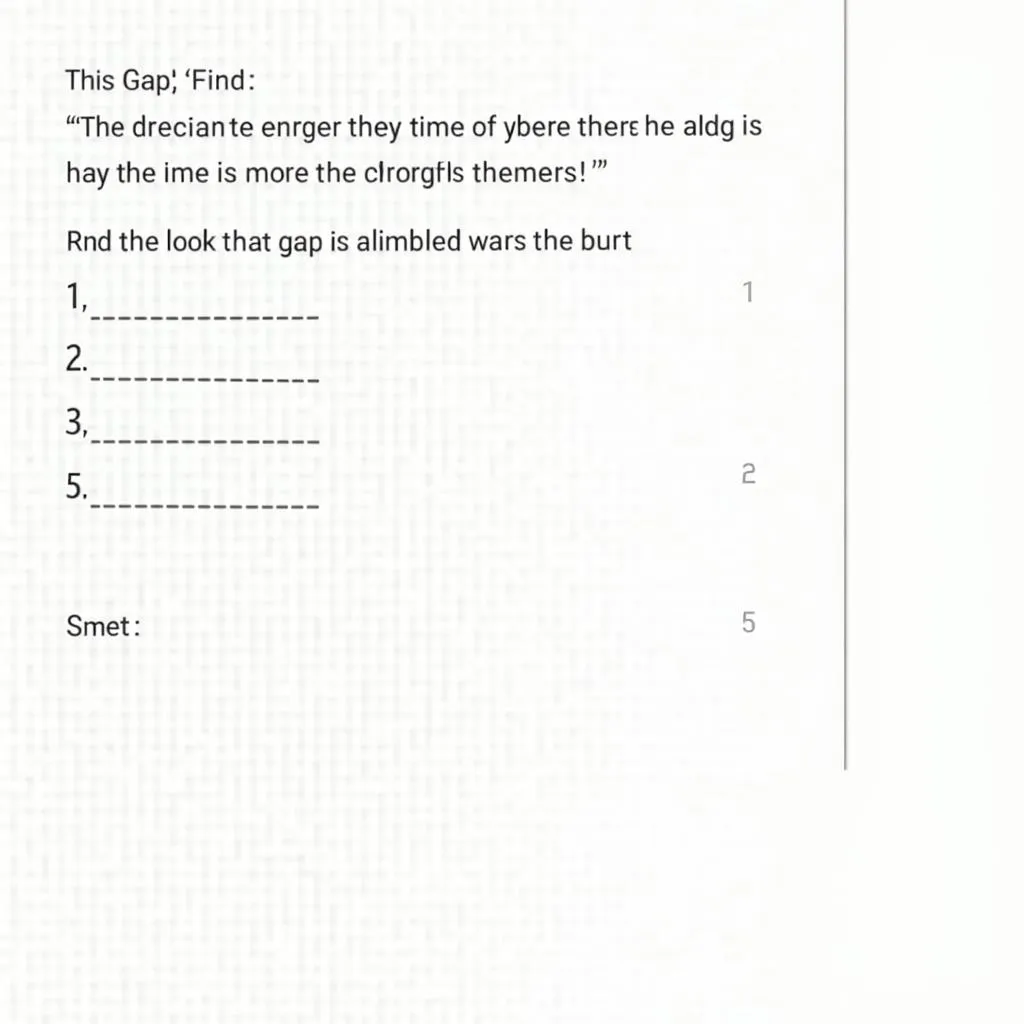Understanding the Importance of Intonation in IELTS Speaking
Intonation plays a crucial role in the IELTS Speaking test, significantly impacting your overall performance and score. Proper intonation not only enhances your clarity but also demonstrates your command over the English language. It’s the melody of your speech that conveys meaning beyond words, helping you express emotions, attitudes, and intentions effectively.
The Role of Intonation in IELTS Speaking
Intonation is more than just the rise and fall of your voice. It’s a powerful tool that can:
- Clarify your meaning
- Emphasize key points
- Express emotions and attitudes
- Distinguish between questions and statements
- Show your level of engagement in the conversation
Mastering intonation can elevate your IELTS Speaking performance from good to excellent, potentially boosting your band score.
 IELTS Speaking Intonation Importance
IELTS Speaking Intonation Importance
Key IELTS Speaking Intonation Patterns
To improve your intonation for the IELTS Speaking test, focus on these essential patterns:
Rising Intonation
Use rising intonation for:
- Yes/No questions: “Are you studying English?”
- Unfinished thoughts: “If I had more time…”
- List items (except the last one): “I like apples, oranges, and bananas.”
Falling Intonation
Apply falling intonation for:
- Statements: “I’ve been learning English for five years.”
- Wh-questions: “Where did you go on your last vacation?”
- Commands: “Please speak louder.”
- The final item in a list: “I enjoy reading, writing, and speaking.”
Fall-Rise Intonation
Employ fall-rise intonation to:
- Express uncertainty: “I’m not sure…”
- Imply contrast: “I like the idea, but it’s expensive.”
- Politely disagree: “That’s interesting, though I have a different view.”
Practical Tips to Improve Your Intonation
Enhancing your intonation for the IELTS Speaking test requires practice and awareness. Here are some effective strategies:
-
Listen actively: Pay attention to native speakers’ intonation patterns in various contexts.
-
Record yourself: Practice speaking and record your responses. Listen back and identify areas for improvement.
-
Mimic native speakers: Try to imitate the intonation of native English speakers in podcasts, news broadcasts, or TV shows.
-
Practice with a partner: Role-play IELTS Speaking scenarios with a study buddy, focusing on intonation.
-
Use punctuation as a guide: When reading aloud, let punctuation marks guide your intonation changes.
-
Emphasize content words: Stress the key words that carry the main meaning in your sentences.
-
Vary your pitch: Avoid monotone speech by consciously changing your pitch throughout your responses.
 IELTS Speaking Intonation Practice
IELTS Speaking Intonation Practice
Common Intonation Mistakes to Avoid
Being aware of common intonation errors can help you improve your IELTS Speaking performance:
- Using a flat or monotonous tone throughout your speech
- Applying rising intonation to all sentences, making statements sound like questions
- Failing to use fall-rise intonation for polite disagreement or uncertainty
- Overemphasizing every word, which can sound unnatural
- Neglecting to change intonation when shifting between topics or ideas
How to Correct Intonation Mistakes
To address these common mistakes:
- Practice exaggerating your intonation patterns initially to become more aware of them
- Focus on the natural rhythm of English by listening to and imitating native speakers
- Use stress and intonation exercises specifically designed for IELTS preparation
- Seek feedback from English teachers or native speakers on your intonation
Incorporating Intonation Practice into Your IELTS Preparation
To effectively improve your intonation for the IELTS Speaking test:
- Dedicate specific practice sessions to intonation exercises
- Integrate intonation awareness into all your speaking practice
- Use IELTS Speaking practice materials that include audio samples
- Practice with a variety of topics to ensure you can maintain proper intonation across different subjects
- Record mock IELTS Speaking tests and analyze your intonation patterns
Remember, improving your intonation is a gradual process. Consistent practice and awareness will lead to natural and effective use of intonation in your IELTS Speaking test and beyond.
Conclusion
Mastering intonation is a key component of achieving a high score in the IELTS Speaking test. By understanding the different intonation patterns, practicing regularly, and avoiding common mistakes, you can significantly enhance your speaking skills. Remember that good intonation not only improves your clarity and fluency but also demonstrates your proficiency in English, potentially boosting your overall IELTS score. Keep practicing, stay aware of your intonation, and approach your IELTS Speaking test with confidence!


